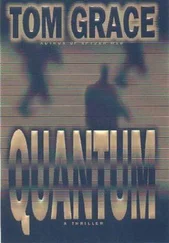Europa was named after the mythical Phoenician princess that Zeus carried off and ravaged. Detailed images from the spacecraft revealed a pattern of fractures on the frozen moon’s surface similar to ice flows in the Arctic Ocean – evidence that beneath Europa’s frozen shell lay an immense body of liquid water larger than all Earth’s oceans. Dark regions mottling the moon’s surface revealed ongoing volcanic and seismic activity, likely the result of Jupiter’s intense gravity wracking Europa’s molten core. With heat, minerals, and liquid water, scientists now saw Europa as the most promising place in our solar system to search for extraterrestrial life.
The complexity of a mission to Europa was unlike anything NASA engineers had encountered since the days of Apollo. Forays to other worlds had thus far only scratched the surface of those celestial bodies. Once on Europa, NASA planned to bore through at least six miles of ice in order to explore a mysterious ocean. A submersible robotic vehicle designed to plumb those hidden waters would not only have to survive a journey in the vacuum of space, but also be able to withstand a crushing pressure that, at a minimum, would equal the deepest place beneath Earth’s oceans.
NASA’s Europa team, led by Collins and his wife, sought out the best minds in robotics, biologic testing, artificial intelligence, and deep-sea remote vehicles to help tackle the technical problems posed by the mission.The Europa Lander not only had to perform numerous complex tasks in an extreme environment but, due to the distances involved, it also had to be capable of making decisions on its own.
Early on, Collins’s team seized on the idea of exploring Lake Vostok as a full-dress rehearsal for the mission to Europa. Exhaustive testing of various subsystems finally led to the construction of a prototype. Ice Pick incorporated all but three of the main systems to be used by the Europa Lander. The deep-space communications unit was deleted from Ice Pick, since the probe’s first stage wouldn’t be more than fifty feet from the people controlling it. While it would have been nice to have the genetic analysis module on board, the scientists at UGene were still tweaking it, and any samples retrieved from the lake would be analyzed in their laboratory afterward. The probe’s nuclear power supply – a radioisotopic thermoelectric generator – was not included, because an international treaty expressly forbade the importation of nuclear material into Antarctica.
The wind shifted and the parhelic circles slowly faded away. Satisfied that he’d captured what he could, Collins picked up his camera and headed back to the station. He followed the thick orange umbilical line that provided power and communications to Ice Pick.
After a quick look around the station, Collins reentered the tower air lock and closed the door. He wasted no time stripping down to his jeans and turtleneck – the station’s interior was over a hundred degrees warmer than outside. Static sparks crackled as he peeled the woolen balaclava from his head; his black hair and beard were matted down by the protective head covering.
‘Water?’ Nedra asked as Collins clambered up the spiral stair to the station’s main level, scratching his chin.
‘Oh, yeah. My mouth is drier than a camel’s ass.’
‘That’s not the image I want in mind the next time you kiss me.’
Nedra filled a tall plastic glass and handed it to him. Keeping hydrated was critical in a place totally devoid of humidity, where the average annual precipitation was less than the Sahara Desert. Collins sat down beside his wife at the long workstation. Nedra’s monitor displayed the same information she hoped to receive one day, several years from now, from a spacecraft on the surface of Europa.
‘Status?’ Collins asked.
‘The sample capsules from the last mission are stowed and a new set of empties are on board the hydrobot. Batteries are at one-hundred percent charge.’
‘Then let’s see if we get lucky today.’
Clinging by actuated crampons to the underside of the glacial ice sheet in the slushy upper boundary of Lake Vostok, the second stage of the Ice Pick probe waited for its next command. It had taken five days in late November for the three-foot in diameter sphere to melt its way straight down through over two miles of glacier. The cryobot liquefied the ice beneath it with the heating panels on its lower hemisphere, and, as it sank, the displaced water refroze above it to prevent contaminants from the surface from entering the hidden lake. A filament of superconducting wire imbedded in a carbon nanotube sleeve emerged from the top of the sphere like a strand of webbing from a spinneret, and ran straight up along the path of the cryobot’s descent from beneath the first stage on the surface.
At Nedra’s command, the circular heating plate at the lower pole of the cryobot receded about a quarter-inch into the sphere, then slid away to expose an iris diaphragm.
‘Equalizing tube pressure,’ Nedra announced.
A series of pressure-relief valves slowly opened to allow a flow of water from the lake to gradually enter the cylindrical chamber behind the diaphragm. Once the air inside the chamber had been evacuated and the water pressure inside made equal with that of the surrounding lake, the valves closed.
‘The tube is flooded and equalized,’ Nedra noted.
Collins switched on the monitor in front of him and gripped the joystick controls. ‘Launch the fish.’
The rings of the iris diaphragm rotated to create an eight-inch aperture at the base of the cylindrical chamber. A blast of compressed air shot the two-foot-long, torpedo-shaped hydrobot through the slush into the dark water below.
Once the hydrobot was safely away, three telescoping masts extended out from the bottom of the cryobot. A pre-programmed series of transmissions verified that communications between Ice Pick’s second and third stage had been established.
‘Hydrobot is in the water,’ Nedra said. ‘She’s all yours.’
The graphical display of gauges and bar graphs on Collins’s monitor became colorfully active as the stream of real-time data began flowing in from the hydrobot.
‘All systems are up and running,’ Collins announced. ‘I’m switching on lights and camera and powering up the propulsion system.’
Halogen lights in the bow of the hydrobot illuminated the crystal-clear water as it slipped downward toward the distant lake bottom. The hydrobot’s descent slowed, then halted as the screw propeller in its tail dug into the frigid water, spinning in reverse to counteract gravity. A trio of maneuvering thrusters clustered around the hydrobot’s center of mass pivoted in response to Collins’s command and slowly rotated it like a baton.
‘Signal strength is good. The hydrobot’s responding to guidance commands,’ Collins said, the image on his screen spinning wildly.
‘Do you have to do that every time we launch?’ Nedra asked, clinching her eyes shut as she rubbed her temples. ‘You know it makes me dizzy.’
Collins brought the hydrobot to a level stop. ‘Plotting course to the next search area.’
The bow of the hydrobot dipped down and Collins piloted the submersible in a gentle sloping descent toward the bottom. Other than a few gently drifting particles, the water in the upper reaches of Lake Vostok was crystal clear – there was no wind, currents, or tide to stir things up. Through the first three hundred feet of its journey downward, the hydrobot recorded only minor temperature fluctuations in frigid water.
‘I think I see something,’ Collins announced as the hydrobot entered the search area. The clear water characteristic of the upper lake was giving way to a gray-black haze. ‘Visibility is dropping.’
Читать дальше












